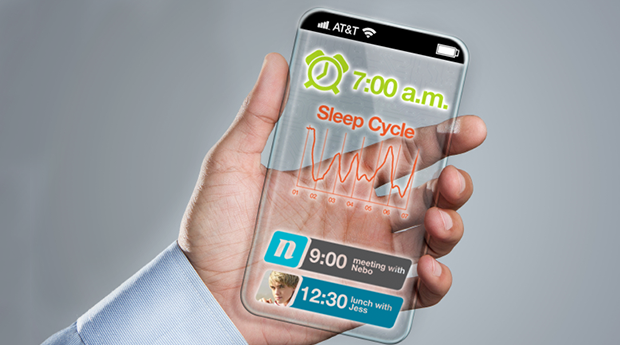7 Things To Consider in the Mobile Age

2007 was supposed to be the “Year of Mobile.” Then later that year it was said 2008 was “really” going to be the “Year of Mobile.” Then, 2009, 2010, etc. Each year predicts the same thing about the next, but the truth is we need to stop sitting around waiting for mobile to take off and start realizing that we’ve been in the Age of Mobile this whole time.
Last year, 30 percent of all web traffic occurred on mobile devices, and that number is expected to reach 50 percent by next year. In fact, in some industries that percentage is higher. Take your pick of statistics:
- There was a 40 percent increase in mobile purchases in 2012.
- 70% of mobile searches lead to an action within 1 hour.
- Soon, mobile devices will outnumber people—an 18-fold increase from 2011 to 2016.
- Americans spend more than two hours per day on mobile (nearly equaling television with just over 2.5 hours).
Every quarter the stats pour in, and it becomes clearer that the marketers, developers and digital agencies that aren’t devoting an equivalent portion of resources to mobile will quickly fall behind. So when crafting a mobile strategy, make sure it’s truly ready for the mobile age by considering how the following apply to your audience.
Content
When deciding on mobile content, there are a couple questions that should come to mind. How much of the same content from your main site should you make available on the mobile site? How much content, if any, should be unique to your mobile efforts?
The answers to these questions come from mapping out your customer’s buyer journey. Maybe the content you offer on mobile is the same; maybe it’s just what the user needs on the mobile device; and maybe it’s different content altogether to complement your non-mobile content. It’s all about providing the right content at the right time to your users, not necessarily all the content all the time.
Remember, you’re telling a story with all your content. Decide what parts of the story occur on mobile and plan accordingly. Also, make it count. Remember, seventy percent of mobile searches lead to an action within an hour. Without the right content, it could be an action in your competitor’s favor.
Apps versus Mobile Sites
The issue of apps versus mobile sites isn’t a question of either/or; you should always consider both.
While a mobile presence should always include either a responsive or mobile site, think about what an app could offer your audience if you’ve got the resources to build one. Again, this is contingent on your audience’s buyer journey and what part of that occurs on mobile.
An important factor in this is frequency; that is, how often people are purchasing your product or service. No one is going to use an app for something like a mattress that you buy once every decade or so unless you offer something beyond a mobile ecommerce platform. A branded utility app for picking the right size mattress or adjusting the mattress settings, if there are any, might not lead directly to a conversion but could help the user along the path to purchase by offering a unique selling point or useful tool that will increase awareness.
Likewise, frequency might be greater for B2B users, such as a mattress wholesaler. In that case, a mobile app geared toward them could be as useful as a B2C app is for a product with a short buying cycle. Again, make sure you’re giving the right users the right content at the right time in the right place.
Measuring Mobile
We’ve talked about it before—you have to go beyond last click attribution. In the digital, mobile age, all the data is readily available to see not only how your audience is purchasing on mobile, but also how mobile is assisting in purchases elsewhere. Forty percent of online purchases use 3 channels or more in the buying journey. Do you know what percentages make up your buyer journey? Find out with the right metrics and optimize accordingly.
If most of your business occurs offline, your mobile presence should always provide opportunities for offline actions (e.g. “Click To Call” buttons); there could not be a simpler way to measure your mobile impact than by measuring conversions like these. Other calls to action to measure besides online purchases could include:
- Adding a product to a cart/wish list on an app or mobile site, which leads to a conversion elsewhere
- Using a coupon code integrated with a point of sale
- Scanning a QR code for discounts or unique content (Okay, we’re not particularly big fans of QR codes, and the audience using them might not be the hippest, but at least they’re taking an action)
- An app/branded utility leading to an in-store purchase
These are all readily available call to action and measurement opportunities to see how well you’re tying together online and offline, mobile and non-mobile. The opportunities are endless.
Take, for instance, “buzzed mobile” marketing. Some companies found that their audiences are more likely to take actions after 9:00 p.m. (presumably when they’ve had a little to drink) and send them email offers at such times, which they immediately see on their mobile device. They’ve had great success, and it’s all thanks to the power of analytics and alcohol!
Responsive Pros and Cons
For a great mobile experience that’s not tied to a specific device or screen size, a well thought out and well executed responsive design is often the best and most comprehensive solution. If done right, you can prioritize what people see on what screen size according to the screen size and device, and where they’re at in the buyer journey.
Find out what information users need when they’re looking on a tablet and give them exactly what they need in that resolution—no more, no less; then, do the same for smartphone resolutions. And remember, this isn’t just about screen size and/or reprioritizing the layout, but also including touch-based gestures where appropriate and expected.
I know there are people that hate responsive and will push for apps only. Others will argue for separate mobiles sites (e.g. m.yoursite.com).
In my opinion the only way you can really justify creating an m.yoursite.com site is if you’re providing content that is unique to mobile users. Not just layout or IA differences, but truly unique content. The rational isn’t just based on the user experience for the mobile audience, but how developers code responsive sites. If the content is truly unique, responsive would make for a clunky and inefficient solution.
Like I mentioned previously, it’s not a question of app versus mobile site, or app versus responsive. What’s certain is that whatever you do, you can’t skimp. Your site either has to be responsive or has to redirect to an “m.yoursite.com” experience. Forty percent of mobile users will opt for a different site if yours isn’t mobile friendly.
Checkout and Payments
While many of the choices you make for your mobile presence have a good deal of gray area, this one is pretty straightforward: alternative payments, at least for now, are the way to go for mobile checkout. ShopVisible finds that 78 percent of mobile transactions are conducted via alternative payment (e.g. PayPal rather than credit card). However, alternative mobile transactions can take a variety of forms.
The most successful at this point is direct carrier billing. That is, one-time, usually small purchases that go directly to the mobile carrier bill or mobile account. Is your end product an app or ringtone? This is you, and this makes up most mobile transactions. Like we mentioned when considering frequency of purchase: the more expensive a product or service, the longer the sales cycle and the more likely mobile is to assist in conversions as opposed to make up the conversion itself.
Mobile transactions can also be closely linked to offline. An increasing number of in-store customers are using mobile as their payment platform (tap and go technology such as Google Wallet) while an increasing number of offline merchants are using mobile as the point of sale (mobile credit card processing such as Square). But there’s also an emerging trend of companies choosing to build their own mobile in-store payment platforms (essentially, customers telling merchants, “Put it on my tab,” via a mobile app). Consider that the Starbucks mobile payment platform did 3 million transactions in its first month.
Showrooming
This issue constitutes a line that must be drawn in the sand. For offline retailers, you must either fight it or embrace it. Don’t be mad that someone does a mobile search for your product in-store and opts for a better deal elsewhere. The impetus is on you to give them a reason to stay.
Don’t see it as a negative. See it for the positive that it is: an opportunity to be fun and creative, to add value and create genuine experiences that tell your story better than the best ad copy could. The great ones will speak for themselves.
http://www.youtube.com/watch?feature=player_embedded&v=SkGaFRwIs7c
It doesn’t all have to be some contrived mobile stunt that lets you keep your customers, though. It could be something as simple as having a conscience. One of our favorite subjects and favorite clients, P.L.A.Y., makes eco-friendly designer pet beds.
However, that’s not all people are buying from them. Ecommerce is boring. Retail is boring. Having purpose, standing for something bigger than revenue, and taking a stand builds brands and drives customer loyalty. P.L.A.Y. did just that through their Warm Bellies Initiative. By donating chill pads to shelter dogs with every designer bed purchase, P.L.A.Y. transformed a purchase action into a cause and being a member in a community. They’re offering the chance to make a needy dog happy, to join a community of like-minded animal advocates. Don’t complain that showrooming is syphoning off your business. Take action. Think. Plan. Offer value. Engage and become better.
Redefining Mobile
The most important thing you can do, the thing that should shape your entire approach to mobile, is to evolve your idea of what mobile means. You might think mobile is just location, but it’s not. Location isn’t mobile. Location is just data. Mobile is, rather, location-based.
Asif Khan, President of the Location Based Marketing Association, said at a recent event that location-based means an intersection of people, places and media. If that sounds like a broad definition, that’s because everything is location-based. Broaden your idea of location and you unlock limitless opportunities to reach your audience. Cars are a location. WiFi hotspots are locations. Mobile apps are locations.
Location-based data is seeing exponential growth in the Age of Mobile. Eighty-five percent of data collected on users has a location element to it, and the reasons aren’t hard to see. Push notifications have six times the response rate when using geo-targeting. The inclusion of a location or city name in mobile ads improves click-through rate 200 percent.
Remember that the ultimate goal is everything—social, PPC, mobile browsing—converging on one person at one time in one place to give that user exactly what he or she needs. In the end, it will be quality, targeted content, not coupons or discounts, that truly offers value to the user and legitimizes your mobile strategy.

Comments
Add A Comment